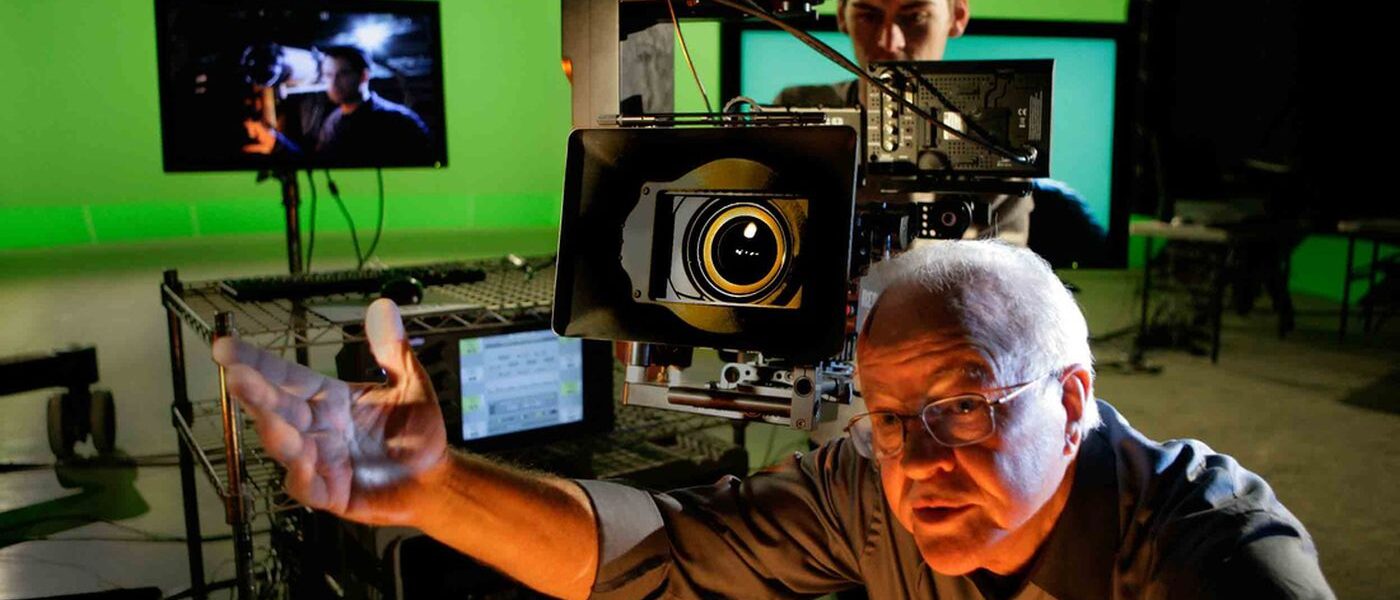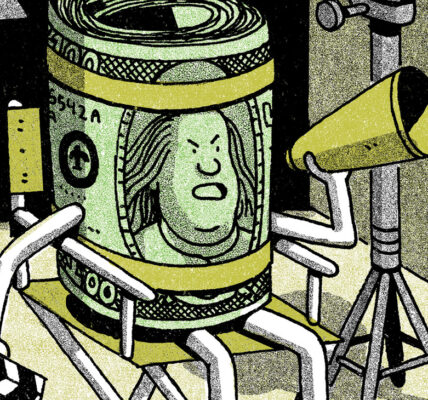As a result of cinema’s transition from celluloid film to digital data, a number of recent developments in the movie industry are providing tremendous opportunities. Ever since working on 2001: A Space Odyssey in Cinerama 70mm, which was shown on deeply curved 90 foot wide screens, I have remained interested in ‘immersive cinema’. In the 1980’s, I made a major effort to bring the Showscan 60 frame per second (fps) 70mm giant screen process to the industry via my film Brainstorm, but to no avail; this was mostly due to excessive cost for film stock and prints as well as requiring new projectors. Now there is a lot of buzz about 3D and higher frame rates (HFR), yet few people seem to have a comprehensive understanding of how to move the industry into the 21st century, while taking advantage of the low cost of data and the fact that today’s digital projectors are already running at 144fps.
3D projection is often abysmally dark, due to the filtering and glasses, resulting in average theater brightness of two-and-a-half foot lamberts (fl: a measurement of reflected light from a screen). The standard is supposed to be 15 fl. 3D has also revealed that 24fps is inadequate for an immersive 3D illusion due to strobing and blurring that interferes with the 3D effect; this is an artifact of mechanical projection of celluloid film using a double-bladed shutter that is necessary to limit flicker. Peter Jackson is bravely making The Hobbit at 48fps, and recent reviews of his digitally projected ten-minute demo have been mixed, mostly because the HFR induces a kind of video-like quality similar to live television.
Jim Cameron is planning to shoot Avatar II & III at 60fps, and has produced some amazing demonstration films showing a comparison of 24, 48, and 60fps. It would be tragic if the studio got cold feet about this. My experience with Showscan at 60fps is that it is best to show each frame only once, which is possible only at 60fps or higher. 48 fps requires that each frame be ‘flashed’ twice, which is better than flashing each frame five times as for 24fps digital 2D. The ‘single flash’ and low blur of HFR is the Holy Grail to cinema as event, particularly since it can be projected at any brightness without flicker, and digital projectors do not have shutters at all.
There is no question in my mind that HFR and 3D are both attempts at creating an immersive event for cinema, and that calls into question the relationship between the movie and its audience. Movies, so far, have been at 24fps, and are shown generally on relatively small rectangular screens in cinemas and, even in 2D, are often shown at substandard brightness of around 8-12 fl. Your television, computer, tablet, and smartphone are all showing images at around 50 fl, which delivers crisp, bright, highly saturated colors. Not so in cinemas.
The ‘cinematic language’ of master shots, two-shots, singles, over-shoulders, and inserts make up the lexicon of cinema, and are all well-known and wonderfully crafted by directors, cinematographers, and editors. The relationship between most movies and their audience is one of ‘third person’ voyeurism—the audience is not present, but is observing the action ‘over the shoulder’ or via various camera angles and moves that allow the audience to observe, but not participate in the story.
Everyone assumes that the movie will be seen pretty much the same way, no matter whether it is on a rectangular movie screen (even IMAX), or on some other electronic media form. Most of the revenue is generated in the electronic form, and the premiere release of movies in theaters creates a public ‘platform’ that decides the film’s audience appeal and projected grosses. Yet the audience count for theatrical viewing is now at a 16-year low, and probably going to continue to decrease unless we do something to convince people that the cinema offers an experience that is impossible to get on a television, computer screen, tablet, or smartphone. Younger audiences see little advantage to going out to a multiplex, since they carry films in their pocket. Easy, inexpensive, portable.
It came to my attention about three years ago that digital cinema projectors were running at 144fps to enable 3D, even though each left and right eye frame was being shown three times. A 24fps movie, therefore, provides 72 flashes per second to each eye, totaling 144. That is a lot of repeated frames, and still a lot of blur.
The Hobbit is offering a 48fps 3D version that dramatically improves the clarity of 3D, reduces blurring, and increases the immersiveness of the film, possibly at the expense of looking too ‘soap opera’ for some people. I believe that audiences will get used to it, will recognize the obvious benefits, and ultimately embrace a number of cinematic improvements to come. The Hobbit will also be available at 24fps, so people can see the difference and make their own choice, but I certainly hope that Peter Jackson can prevail in getting the film shown in many theaters at 48fps, and with adequate brightness.
Jim Cameron’s Avatar took us on a wild 3D adventure, and brought us along for the ride, so to speak. As he moves closer to making the sequels at 60fps, I am hoping that the debate starts to focus on the type of movie that will most benefit from high immersiveness. Indeed, when I saw Avatar in 3D, and realized that it was really a kind of immersive ride, and that it was produced by exploring and embracing ultra-high technology—and then became the highest grossing movie of all time—I decided it was time to put my years of experience with Showscan to work.
My experience with Showscan, IMAX, and theme park rides such as ‘Back to the Future—The Ride’ is that, if you want to take the audience along on an amazing, ‘ultimate trip’, you need every pixel, every increase in frame rate, and every square foot of ultra-bright giant screen you can get. The more real and immersive the better for the new genre of ‘cinema as event’. This is not a threat to the 24fps standard, which is a wonderful storytelling form that will persist for eons and which is perfectly suited to rectangular screens in cinemas, televisions, etc.
What I am exploring now is the highest possible current frame rate of 120, do it in 3D with dual cameras and dual projectors in 2K resolution—upgrading to 4K as the technology comes on line—and project the movie onto deeply curved high gain Torus type screens. Torus screens are more commonly used in flight simulators, since they are a section of a sphere and so act as a component of an optimized optical path that focuses all the light back to the audience. The demo screen recently built for my project by Stewart Filmscreen is a 20-foot wide scale model of what could be up to 95 feet wide and 60 feet tall. It will be three times brighter than even the largest IMAX screens, and will even further benefit from the soon-to-come transition to laser illumination. I am using dual Christie Digital 20,000 lumen projectors, and after 3D filtration and glasses, we are seeing 30 fl. This is unheard of, and certainly not experienced by today’s audiences.
I expect that 120fps, 3D, and high grain, wide view imagery on a giant screen will produce a profound feeling of immersion that goes far beyond anything ever seen in Cinerama, IMAX, Showscan, or anything ever attempted. And this will reveal the need for a different cinematic language. My work with theme park rides and simulators has given me essential experience in how to develop this new cinematic language which, I hope, will make the audience feel that they are IN the movie, not just looking AT the movie. It will be a ‘first person’ experience that breaks the forbidden ‘fourth wall’ of cinematic language.














